Fashion for decorative small dogs is celebrated among breeders today. Among a large number of animals interesting on the exterior, it is worth highlighting the dandy-dinmont terrier, which in addition to its external characteristics has a lot of positive features.
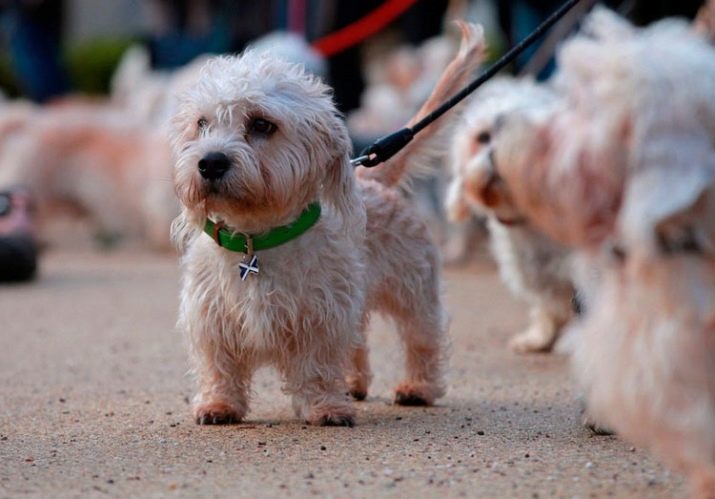
Origin history
The breed is considered one of the oldest, since the first mention of dogs with a similar exterior dates back to 55 g. e. At that time, animals were present on the lands of the Roman Empire, and their main occupation was hunting for small rodents and other small-sized game. Locals called four-legged "earthen" dogs. The ancestors of the modern dandy-dinmont terrier were famous for their ability to sneak up on the ground almost silently, which made it possible to overtake her even in cunningly constructed burrows.
People appreciated these qualities of animals at their true worth, so the breed was soon domesticated, and dogs were used to hunt a larger fur-bearing animal with humans. There is information that terriers very often took part in the hunt for bears, standing out with their courage even in the light of the large size of the predatory beast. In everyday life, terriers were not distinguished by excessive aggressiveness towards people, they were in good contact with children. The ancestors of the dandy-dinmont terrier were used in farms to protect crops and crops from various pest rodents that raided the farmsteads.
Today, it was not possible to reliably establish all the breeds that participated in the formation of attractive terriers. There are versions that the animals have the genes of sky terriers and Bedlington terriers. Also among dog handlers there is an opinion that the dogs came from the artificial selection of Scottish terriers.
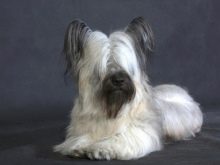
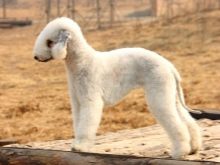
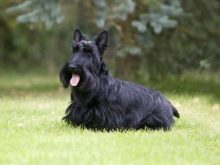
Later, animals became less and less used for hunting, and were popular with traveling musicians and gypsies. In the XVIII century, terriers took part in various performances, very often dogs became participants in demonstrative small game hunts. There is an opinion that the breed got its name thanks to the world famous writer Walter Scott, who had a sincere sympathy for dogs with such an exterior.
The first breed standard was approved in Scotland in 1876.
Breed description
The animal stands out from the rest of the terriers. The dandy-dinmont terrier should have an elongated body, limbs shorter than average, as well as a rather massive head with a cap, which serves as a kind of calling card of the breed. The growth of four-legged pets at the withers is 20-28 centimeters, with a weight in the range of 8-10 kilograms.

The dogs have a well-developed muscle corset, the skull is strong, with an expressive and strong lower jaw, the bite in the animal is scissor-like. Teeth with white enamel, fangs can protrude against the background of other teeth. There is a softer coat on the head. The muzzle is approximately 3/5 of the length of the entire skull; there is a triangular section devoid of hair.
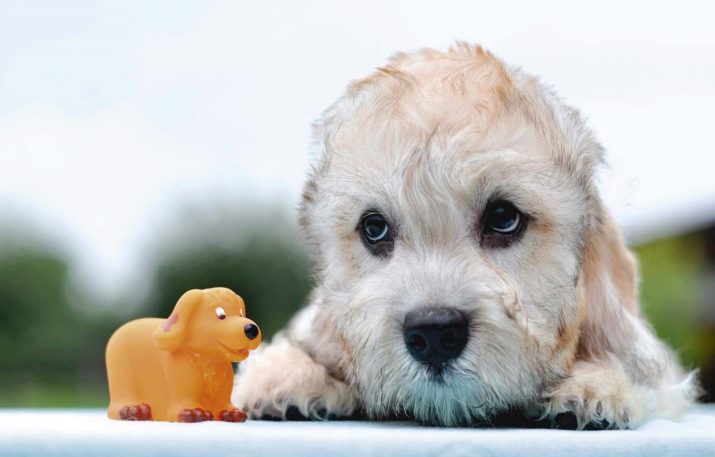
The eyes of the dog are brown, set wide, repeat the shape of a circle, the protein does not stand out. Auricles hanging, placed close to the occipital part.
The breed is characterized by a darker color of the coat on the ears, usually the decorating part on them grows to 24 months.
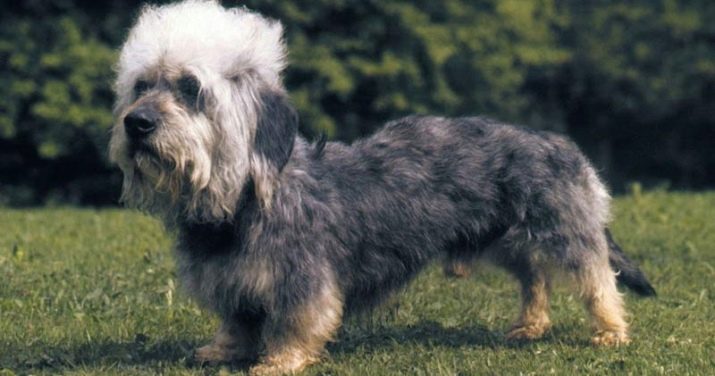
The neck of the terriers will be strong and muscular, the back line has a slightly noticeable bend, gradually rises at the level of the shoulder blades, due to which an arch forms in the back, which falls to the tail area. The chest is lowered between the forelimbs, the tail is small, but protrudes well with its diameter, slightly narrowed to the tip. In the normal state, the tail is slightly higher than the back, and if the animal is excited, it is located almost vertically. The upper part is covered with a hard woolen coat, the bottom is a little softer.

The limbs of the dogs are straight, set wide, have a strong skeleton and well-developed muscles. The hind legs will be slightly longer than the front, the claws and pads are dark. Wool is the main characteristic of the breed. The cover will be double with a soft undercoat, on the back it is laid in locks, on the extremities there are tows of 3-5 centimeters.
Acceptable color options for dogs are all shades of pepper - from dark (almost black) to light silver. On the extremities and in the lower part of the body, a red and fawn shade of hair can be observed, while the cap on the dog’s head is usually silver, in mustard dogs it will be cream. In addition to pepper colors, there are terriers with a reddish-brown coat color.
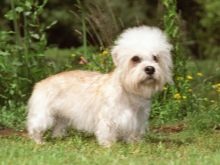
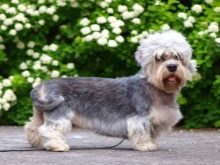
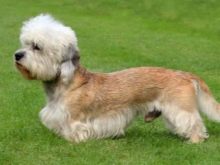
However, for all color options it is important that the tow is always a few tones lighter. Small spots on the wool are not a deviation from the standards, they are usually present in the area of the thoracic region and limbs.
The dandy-dinmont terrier is a dog with a strong immune system, so pets of this breed are very rarely sick. However, animals are prone to defeat the following ailments:
- glaucoma;
- epilepsy.
To prevent many diseases, it is recommended that timely vaccination of puppies and adult dogs, and don't neglect haircuts, which will help to avoid the development of ailments concerning the organs of vision.
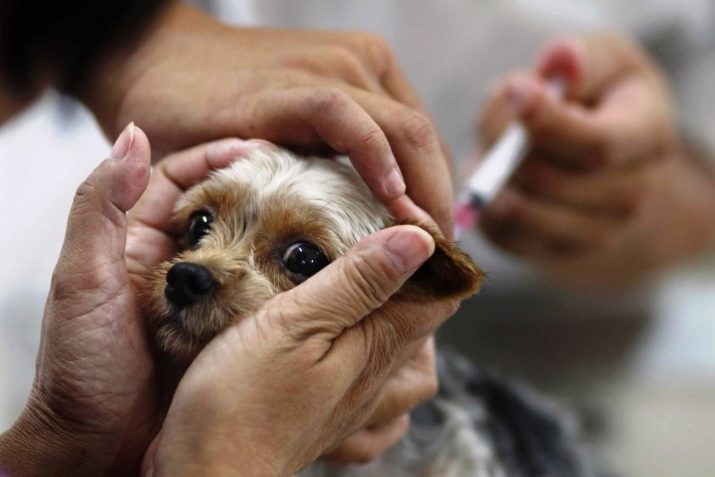
Character
Such dogs will certainly become pets, in the light of the compliant disposition, the pets will be suitable companions for single people or a large and friendly family with small children.In addition to its sociability, the breed is distinguished by its preserved hunting instincts, as well as the ability to carry out guard duty. Despite its modest size, the animal will always protect its loved ones.
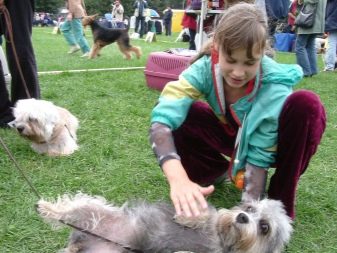

Dogs are not required to provide long walks.Therefore, the dandy will feel comfortable in small city apartments. However, the animals are quite mobile, so in the open, they will require constant monitoring by the breeder. In relation to other animals, dogs are not distinguished by excessive aggression. But with same-sex pets, conflicts can arise due to the identification of a leader.
Terrier owners celebrate dog's cheerful disposition, loyalty, as well as innate curiosity. In addition, the dandy-dinmont terrier may be stubborn, as well as a tendency to make independent decisions. Such character traits are manifested at a young age and, with proper education, can be corrected.
Terriers lend themselves well to training, because they have developed intellectual abilities.
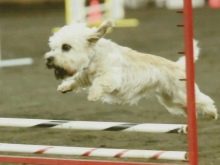
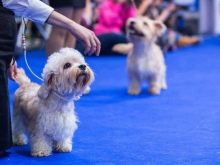
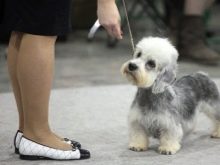
Animals are very affectionate with their master, in addition, they are known as "silent" - Terriers will not bark without unnecessary need. Dogs of this breed choose only one owner for themselves, in his presence they will execute commands and other family members. But in his absence, they often ignore any attempts to control themselves.
Despite the fact that the breed is famous for its sociability in relation to people, pets are quite capable of being alone even for a long time. Family members, as a rule, do not impose such dogs on their society.
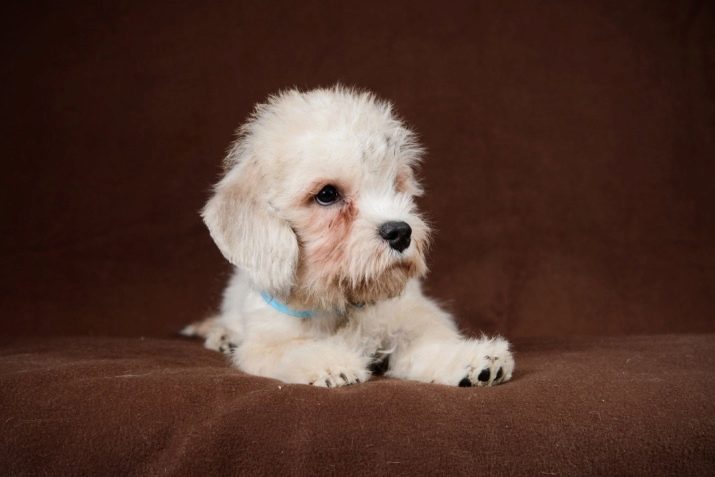
Life span
Dogs of this breed are not long-lived, on average, a pet will be able to live with a person about 10-12 years.
This is affected by a genetic predisposition, as well as diet and care.
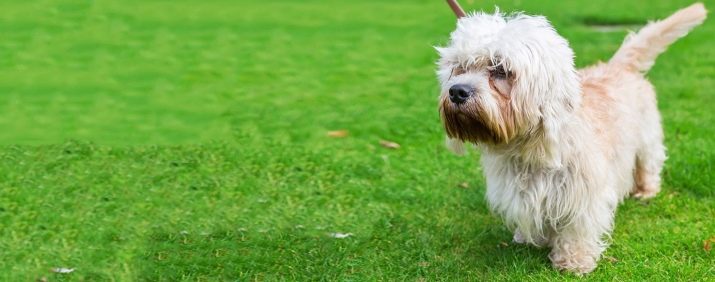
What to feed?
For animals, it is important that the diet is balanced, so many breeders prefer to feed industrial dandy-dinmont terrier feeds. Products should be selected taking into account the weight and age of the dog. A suitable option for pets will be feed classes premium, super-premium or holistic. It is important that the composition of the predominant meat component.
Also, the dog can be fed with natural food, then, in addition to meat and offal, the menu must necessarily include vitamin top dressing and cereals, as well as dairy products and vegetables.
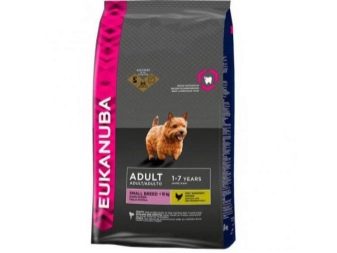
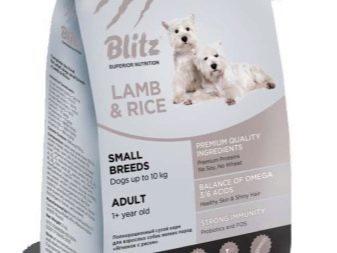
The following products will be banned:
- bakery products;
- smoked meats and pickles;
- flavor enhancers;
- tubular bones.

The animal should always have fresh drinking water available. Terriers do not eat very much. Before serving, it is recommended to boil the products. Puppies are fed from 5 to 7 times a day, by six months the number of meals can be reduced to 3-4 times, after a year the dog is fed twice a day - in the morning and in the evening.
How to care?
A mandatory event related to the care of animals will be a regular haircut. The dog is combed with a soft brush, and knocked-out wool is subject to removal, as a rule, the fur “hat” on the dog’s head is left. It is important to cut the hair around the dog’s fingers, around the eyes and on the stomach. From the point of view of hygiene, it is not out of place to trim the coat in the genital area of the dog. Care is best entrusted to a professional who will take into account all the features of the breed. Today, there are several options for haircuts dandy-dinmont terrier, so the breeder can choose the right one in accordance with personal preferences.
In addition to hair, the dog needs to regularly cut its nails. You may need to file the edges so that they do not cling. Also, the attention of the breeder will require the animal’s oral cavity, caring for it involves the use of special toothpaste and a brush for dogs. Cleaning is carried out a couple of times a week.
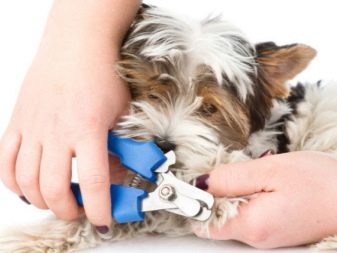
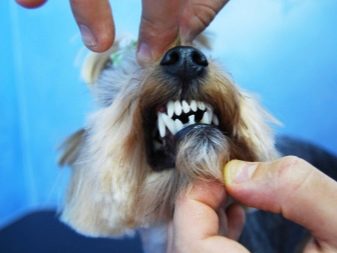
The ears are subject to daily inspection, as insufficient hygiene can lead to inflammatory processes. Clean your ears as they become dirty with cotton pads or a cotton swab 2-3 times a week. Since terriers are prone to the development of glaucoma, eyes must be wiped with special lotions or a decoction based on chamomile flowers. Film or sore eyes will require an urgent visit to the veterinarian.
Due to the thick coat and undercoat, the animals are not afraid of severe weather conditions, therefore they do not need additional clothes. In summer, the coat protects dogs from overheating. Walking with a pet should be daily. If the terrier is kept in the apartment, then it is very important for him to maintain muscle tone.
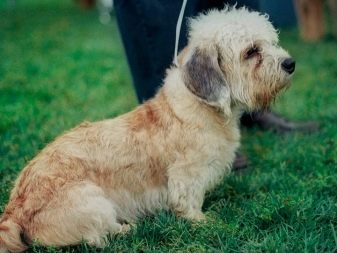
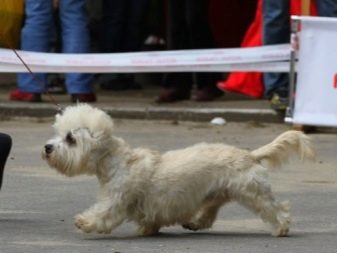
However, walks in places with a large number of steps should be avoided, since such obstacles will overload the back of the animal.
Parenting and training
It is important to start working with the dog as early as possible in order to avoid the pronounced stubbornness inherent in this breed. Training a terrier will require a lot of time from the breeder, as well as patience. Typically, basic team training begins at 4-5 months. First you need to teach the dog to respond to his nickname, walk next to a leash. Also, an important team for the pet will be "fu", which means "can not."
Beginners are not recommended to engage in self-training of a dandy-dinmont terrier, it would be more correct to entrust your pet to an experienced dog handler. Good results are given by joint training with dogs in the same group. Self-study is usually carried out in a playful way. And collective studies will help to avoid unnecessary aggression towards other animals.
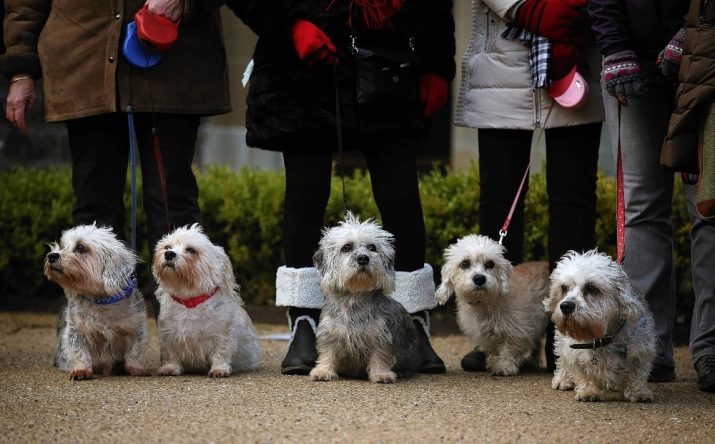
All about the breed of dogs dandy-dinmont terrier, see the next video.








































